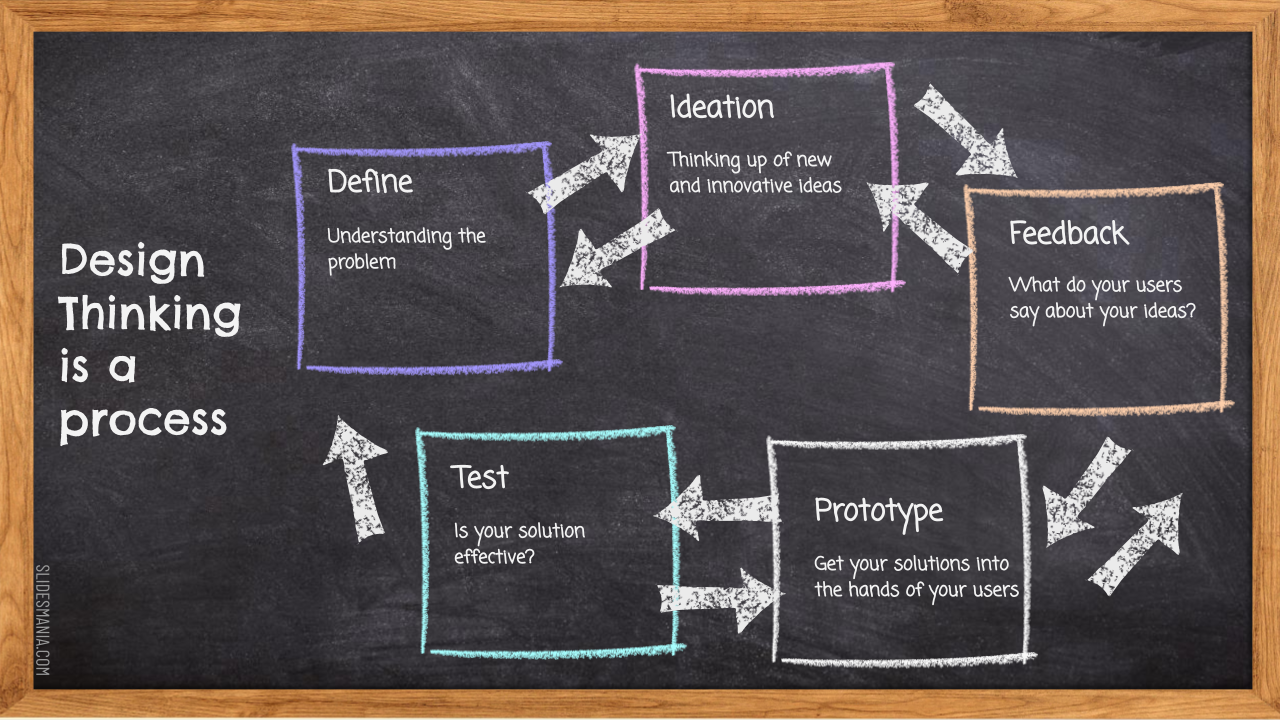One of the highlights of this past month was working with a colleague to run a design sprint in their virtual classroom. I had so much fun working with students around a repeatable process that they could use to solve any problem! With our time limited to one day, these Grade 4 students rose to the challenge and created some incredible solutions that absolutely blew my mind!!!
What Is Design Thinking?
Design Thinking is a repeatable process that when the user is centered, allows students to gain empathy for those for whom they are designing. The process is cyclical and at any point, designers can always return to an earlier point in the process so as to create a more effective solution.
We started our day using a Jamboard and considered all the problems that exist in the world around us. I think it was at this moment that I knew that this was going to be an incredible day! From the isolation related to dealing with Covid to food insecurity, these Grade 4 students were looking at the world with their eyes wide open. As we worked, the students took time to sort their ideas into categories, looking for similarities that may exist between problems.
From there, the students each picked just one problem that they wanted to spend the day tackling. This is sometimes very tricky as there are so many different problems that we may be passionate about. Once they picked the problem that they wanted to focus on, the students took some time to research. In order to create effective solutions, we must understand the problem in an in-depth way.
Our next step was to consider who was affected and to pick someone for whom we would design our solution. Without actually doing interviews and knowing our users well, this is often difficult because we do make assumptions. This was a key part in helping students to understand that this is a process and once we know more, we often have to rethink the effectiveness of our solutions and sometimes this means going back to the drawing board.
Next, we moved into ideation and used Crazy 8s to come up with some new and innovative ideas. With most groups, there is some worry about coming up with ideas quickly but once again, these students jumped on board and came right along with me.
In the afternoon, we spent some time paper prototyping and creating pitches for our solutions. After presentations and feedback, the students had the opportunity to reflect on the day: what they learned about themselves and the process, and also how they could use the learning in the future.
What Was the Learning for Students?
The students walked away with some incredible ideas for how they would create change in the world. Through the use of these design tools, they were excited to consider the next steps to their creations. While I always struggle with the limitation of implementation that sometimes comes with design, with this group, I am actually hopeful for what they might create, given the opportunity to connect with someone who might support the execution of their idea.
One idea that came from our day was the creation of an app that would record, track and report instances of racism. Clearly, over the past year, the students in the class have been having critical conversations about race and what is happening in the world around us. It’s because of these conversations and the fact that we can no longer ignore that these issues are having an impact on our children, that this student decided to focus on this topic. Although there were many features of this student’s app, I loved that the designer considered the fact that not everyone has data and that the app would work without it. They also made it easy to access and share the information so that even in a difficult situation – such as facing racism – the user would be able to utilize the app to its fullest potential.
With all of the problems and challenges we all are facing these days, I think it’s pretty incredible to learn a repeatable process for designing something new. Whether or not these ideas come to life right away, I know that these students have learned a new way of problem solving and I know that many will take these skills and apply them in the future.
Interested in learning more about how to run your own design sprint or how to incorporate elements of design thinking into your program for next year? Join me in August for a 3-day Summer Academy Course on Design Thinking for All. You won’t want to miss it!
Note:
ETFO’s position on in-person learning remains unchanged. The union firmly believes that the daily, in-person model of instruction and support best meets the educational, developmental and social needs of students, provides the best experience for support, and is the most equitable learning model for all students.
ETFO’s expectation is that elementary virtual learning in any capacity, including through hybrid models of instruction, will end once the pandemic ends.

